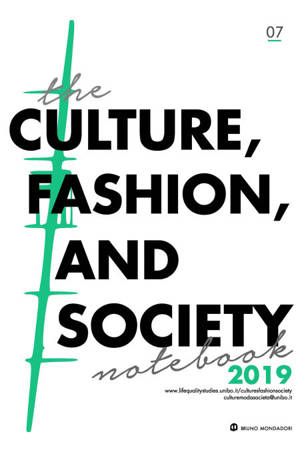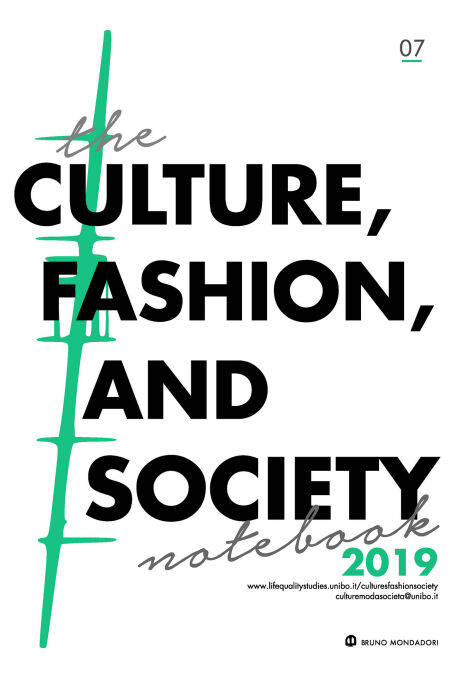
- Retrait gratuit dans votre magasin Club
- 7.000.000 titres dans notre catalogue
- Payer en toute sécurité
- Toujours un magasin près de chez vous
- Retrait gratuit dans votre magasin Club
- 7.000.0000 titres dans notre catalogue
- Payer en toute sécurité
- Toujours un magasin près de chez vous
Description
The objective of this essay is to analyse some aspects of modernist
nationalism, starting with the Universal Exhibition of Turin 1911, organised
to celebrate the 50th anniversary of Italian unity, the Fashion
Palace being a fundamental cornerstone for the construction of a National
Fashion. This in a historical moment when in a context of nationalism
and imperialism fashion was perceived in Western social
consciousness as one of the major indices of expansion and domination
over peoples, a fundamental element in the struggle for world
supremacy.
In particular, the paper will show how, precisely with the Fashion
Palace, the battles for an Italian fashion in that historical phase were
not just an internal question of independence from French fashion,
but rather of the construction of a national identity in the international
networks of politics, commerce, culture, as exemplified by Enrico
Corradini in 1909, identifying the designer Rosa Genoni as the woman
most deserving of Italian character:
I learned the name of Ms. Genoni at a women's conference where she
first presented her proposals. She seemed to me the woman most deserving
of Italian character. The lady's grooming is an expression of beauty and art, it can be a way of resuscitating beautiful Italian character
of other times, it is a way of achieving supremacy in the world
and it is a big industry and a big business, just as it is today for the
French. One of the greatest bonds that Brazil and Argentina have today
with France is that of women's fashion. Those distant regions are
tributaries of French fashion and culture. The day that we could establish
an Italian fashion (I also know that this cannot happen for 100
reasons, 99 of which do not start or end in actual dressmaking) we
would have one more product that we could try to export across the
ocean.
nationalism, starting with the Universal Exhibition of Turin 1911, organised
to celebrate the 50th anniversary of Italian unity, the Fashion
Palace being a fundamental cornerstone for the construction of a National
Fashion. This in a historical moment when in a context of nationalism
and imperialism fashion was perceived in Western social
consciousness as one of the major indices of expansion and domination
over peoples, a fundamental element in the struggle for world
supremacy.
In particular, the paper will show how, precisely with the Fashion
Palace, the battles for an Italian fashion in that historical phase were
not just an internal question of independence from French fashion,
but rather of the construction of a national identity in the international
networks of politics, commerce, culture, as exemplified by Enrico
Corradini in 1909, identifying the designer Rosa Genoni as the woman
most deserving of Italian character:
I learned the name of Ms. Genoni at a women's conference where she
first presented her proposals. She seemed to me the woman most deserving
of Italian character. The lady's grooming is an expression of beauty and art, it can be a way of resuscitating beautiful Italian character
of other times, it is a way of achieving supremacy in the world
and it is a big industry and a big business, just as it is today for the
French. One of the greatest bonds that Brazil and Argentina have today
with France is that of women's fashion. Those distant regions are
tributaries of French fashion and culture. The day that we could establish
an Italian fashion (I also know that this cannot happen for 100
reasons, 99 of which do not start or end in actual dressmaking) we
would have one more product that we could try to export across the
ocean.
Spécifications
Parties prenantes
- Auteur(s) :
- Editeur:
Contenu
- Nombre de pages :
- 100
- Langue:
- Anglais
Caractéristiques
- EAN:
- 9788867743452
- Date de parution :
- 22-12-19
- Format:
- Ebook
- Protection digitale:
- Digital watermarking
- Format numérique:

Les avis
Nous publions uniquement les avis qui respectent les conditions requises. Consultez nos conditions pour les avis.






